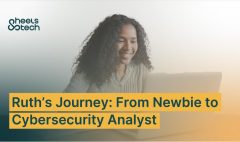The Role Of Social Media In Education: Risks And Rewards:
August 27, 2023 2023-09-06 18:59The Role Of Social Media In Education: Risks And Rewards:
Join me today as we explore the ever-evolving role of social media in education. From connecting students and educators to providing a platform for collaboration and knowledge sharing, social media has become an integral part of the modern educational landscape. However, like any powerful tool, it comes with both risks and rewards. In this article, we will explore the role of social media in education, its risks, and rewards. So, let’s dive in and uncover the potential of social media in education!
The Rewards of Social Media in Education:
Social media platforms offer a myriad of benefits that can enhance the educational experience. Let’s dive into more advantages of using social media in education. Get ready for some exciting insights!
Enhanced Collaboration:
Firstly, they provide an avenue for students and educators to connect and engage beyond the confines of the classroom. Teachers can use social media platforms to interact with their students and share educational content. Through social media groups and pages, students can collaborate on projects, discuss ideas, and seek guidance from their peers and teachers. This fosters a sense of community and enables continuous learning outside traditional classroom hours. This has made learning more engaging and interactive for students, and it has also improved communication between teachers and their students.
Global Connections:
Social media breaks down geographical barriers, allowing students to connect with peers and experts from around the world. Through platforms like Twitter, Facebook, and LinkedIn, students can engage in meaningful discussions, gain diverse perspectives, and build valuable connections that enrich their learning experience.
Access to Educational Resources:
Another significant advantage of social media in education is that it has made learning more accessible. Social media platforms allow students to access educational content from anywhere, at any time. This means that students no longer have to be physically present in a classroom to learn. They can access educational content from the comfort of their homes, which has made learning more convenient and flexible. Moreover, social media acts as a treasure trove of educational resources. From educational videos to informative articles and research papers, platforms like YouTube, Twitter, and LinkedIn offer a wealth of knowledge at our fingertips. Students can access a wide range of perspectives and stay updated on the latest developments in their fields of interest.
Real-World Relevance:
Social media mirrors the real world, making it an ideal platform for students to develop essential digital literacy skills. By engaging with social media in an educational context, students learn how to navigate online platforms responsibly, critically evaluate information, and cultivate a positive digital presence – skills that are increasingly important in today’s digital age.
Amplified Creativity:
Social media platforms offer students a creative outlet to showcase their work and ideas. From sharing artwork on Instagram to creating educational videos on TikTok, social media encourages students to think outside the box, experiment with different mediums, and express their creativity in unique ways.
Aiding Educators:
Social media has also made it easier for educators to collaborate with their peers. They can connect with other teachers and share ideas, lesson plans, and resources. This has led to more innovative teaching methods and improved learning outcomes for students. Social media also allows educators to create interactive and engaging learning experiences. Platforms like Facebook and Instagram can be leveraged to share educational content in a visually appealing manner. Teachers can use these platforms to post quizzes, polls, and discussion topics, encouraging student participation and active learning.
The Risks
Remember, while social media offers numerous advantages, it’s essential to strike a balance and address the potential risks associated with its use in education. Let’s look at the risks associated with the use of social media in education technology. It’s important to consider both sides of the coin. Here are a few points to keep in mind:
Cyberbullying:
One of the biggest risks is the potential for cyberbullying. Social media platforms can be used to bully and harass students, which can have a negative impact on their mental health and well-being.
Inequality and Exclusion:
Not all students have equal access to technology or reliable internet connections. Relying heavily on social media for educational purposes could inadvertently exclude those who lack the necessary resources, creating a digital divide in the learning process.
Privacy Concerns:
Another risk is the lack of privacy and online safety. Social media platforms often require users to share personal information, which can be exploited by malicious individuals. Educators need to educate students about the importance of privacy settings, responsible sharing, and online etiquette to ensure their safety in the digital world.
Distractions Galore:
One of the key concerns is the potential for distraction. With the abundance of entertaining content available, students might find it challenging to stay focused on their academic pursuits. It is crucial for educators and parents to guide students on responsible social media usage and help them strike a balance between educational engagement and recreational browsing. Social media platforms are designed to be addictive and this can lead to a decline in academic performance and a lack of motivation.
Online Safety Risks:
Engaging with social media platforms can expose students to various online safety risks, such as encountering inappropriate content, falling victim to scams, or interacting with strangers who may have malicious intentions.
Information Overload and Misinformation:
Additionally, the spread of misinformation is a prevalent issue on social media. Students may come across inaccurate or false information on social media, which can negatively impact their learning outcomes. Students must be equipped with critical thinking skills to discern reliable sources from unreliable ones. Educators can play a vital role in teaching students how to verify information and navigate the vast sea of online content responsibly.
As we conclude our exploration of the role of social media in education, it’s evident that this powerful tool has the potential to revolutionize the way we learn and interact. By leveraging social media platforms, we can create a vibrant educational ecosystem that fosters collaboration, knowledge sharing, and engagement.
However, it’s essential to be aware of the risks associated with social media, including cyberbullying, distraction, and misinformation. It is, therefore, essential for educators to strike a balance between the benefits and risks of social media in education. They should take steps to protect their students from the potential risks while leveraging the rewards that social media offers to enhance their learning outcomes. With responsible usage and guidance, social media can truly unlock a world of educational opportunities for students and educators alike.
So, let’s embrace the positive aspects of social media in education while navigating the challenges, and together, let’s shape a brighter future for learning!





Comment (1)
Siphumezo
Great